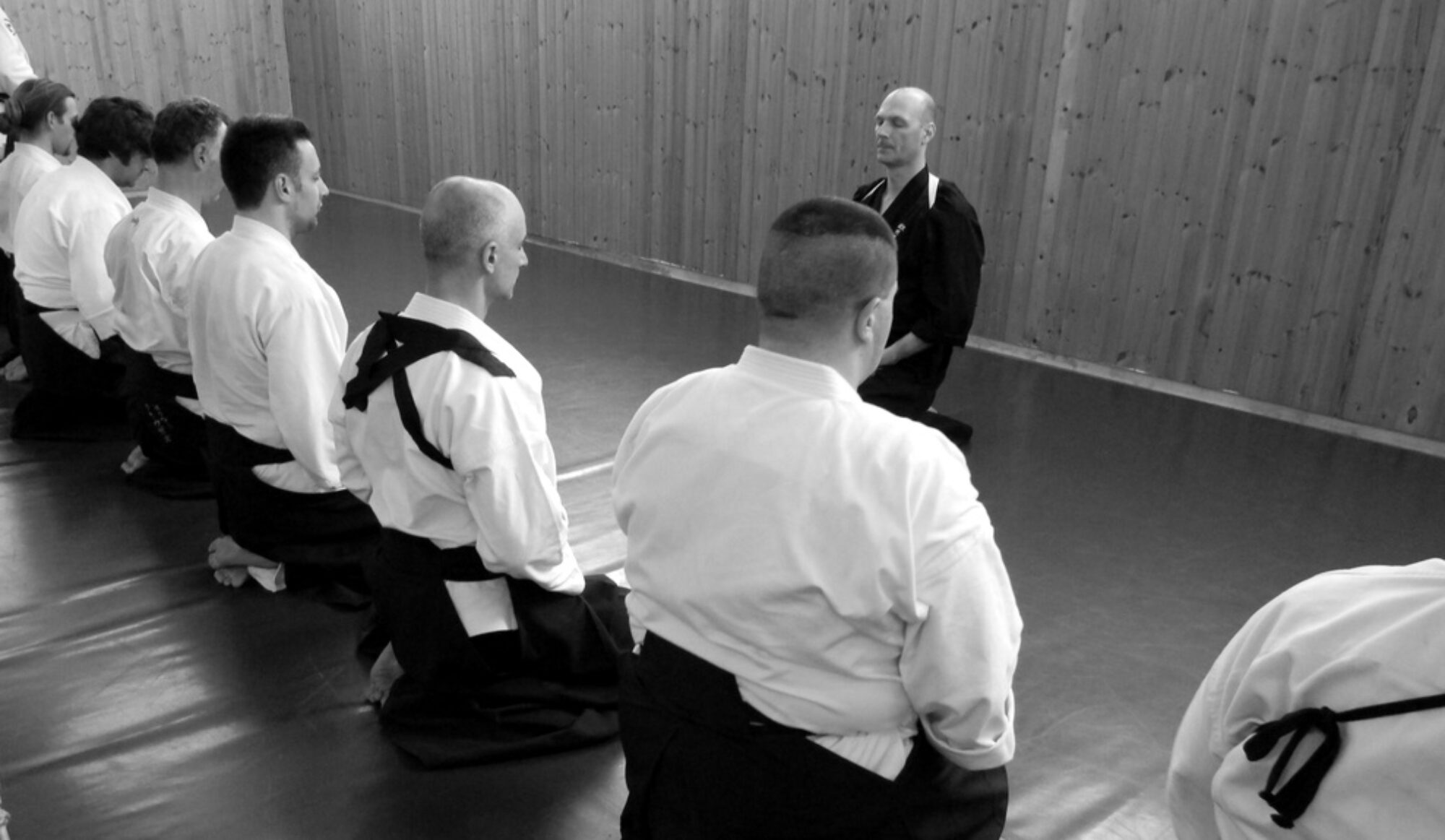Festeggiamo 40 anni di Arti marziali!
Ricordo molto bene il 1982, erano anni in cui molte discipline marziali nemmeno si conoscevano. Bruce Lee imperversava nella cinematografia orientale e solo Karate, Judo erano conosciute, perfino l’Aikido era ai primi passi della diffusione nazionale.
L’Italia, come sempre in ritardo con la diffusione delle novità, accoglieva i primi allievi nelle palestre (con i maestri trepidanti e speranzosi un giorno di entrare nel Gotha celeste) che certo non erano le strutture moderne di oggi. Ancora l’ignoto avvolgeva la disciplina Jujutsu (Lotta giapponese, come veniva definita allora) con cui ho iniziato a praticare. Già, perchè la pratica era una cosa diversa dalla ginnastica… ma l’avrei scoperto molto più tardi il vero significato recondito.
Sono passato per esperienze, tentativi più o meno riusciti, Federazioni, Enti di promozione e similari, associazioni più o meno grandi e gratificanti. Certo, anche gli insuccessi hanno contribuito a creare l’uomo, l’atleta, la persona… anche questi fanno la storia di ognuno. Così come la ricerca di un qualcosa che colmasse le perplessità e le incertezze di allievo acerbo, tutto è parte di quel processo di crescita, analisi e evoluzione che ci ostiniamo a chiamare Do, la Via.
Come disse un mio (davvero grande) Maestro: “Se tu non fossi ciò che sei, non saresti approdato qui per conoscermi a imparare“. Ciò mi ha aperto gli occhi e ho compreso come il concetto di “pratica” possa definire un modo per progredire e diventare una “persona migliore”, pur con difetti, ma in cerca di miglioramento costante.
Gli sarò eternamente grato per gli insegnamenti ricevuti, come lo sono con tutti gli insegnanti, colleghi e allievi che mi hanno permesso di evolvere come insegnante e come persona, perchè la differenza di una pratica diversa si rende manifesta ogni giorno, ogni istante, nelle difficoltà come nei successi.
Allora, festeggiate con noi quarant’anni di buna pratica e volontà! Venite a trovarci in dōjō, partecipate ai nostri eventi e sosteneteci.
Per il Clan Bushido: Banzai, Banzai, Banzai!!!
Evento: incontro di pittura Sumi-e

Da tempo ci si proponeva di organizzare un incontro in presenza di pittura. Leggi tutto “Evento: incontro di pittura Sumi-e”
Le onde che si infrangono…
 Sono passati alcuni mesi dall’ultimo articolo e mi rendo conto che le cose che vorrei dire sono ancora di più di quelle che riesco a scrivere. Sono indubbiamente cambiate parecchie cose da quando il nuovo virus ha gettato questo mondo nel panico e nella confusione informativa, ma certe cose sono rimaste le stesse. Il vantaggio di chi possiede una “buona pratica” da svolgere quotidianamente ha consentito di proseguire anche nel #lockdown i propri doveri di studio, lavoro, cultura personale. Leggi tutto “Le onde che si infrangono…”
Sono passati alcuni mesi dall’ultimo articolo e mi rendo conto che le cose che vorrei dire sono ancora di più di quelle che riesco a scrivere. Sono indubbiamente cambiate parecchie cose da quando il nuovo virus ha gettato questo mondo nel panico e nella confusione informativa, ma certe cose sono rimaste le stesse. Il vantaggio di chi possiede una “buona pratica” da svolgere quotidianamente ha consentito di proseguire anche nel #lockdown i propri doveri di studio, lavoro, cultura personale. Leggi tutto “Le onde che si infrangono…”
Cauta riapertura
 Tante volte durante la mia personale pratica mi sono trovato ad affrontare difficoltà pratiche, terreni instabili e spazi limitati. Mai come ora però, le limitazioni si sono accumulate e indispettiscono me come gli allievi: la necessità cautelativa imposta dopo l’emergenza SARS-2 ha inibito molti studenti i quali aspetteranno la prossima stagione, minando anche l’ultimo mese possibile di pratica o migrando verso corsi alternativi. Leggi tutto “Cauta riapertura”
Tante volte durante la mia personale pratica mi sono trovato ad affrontare difficoltà pratiche, terreni instabili e spazi limitati. Mai come ora però, le limitazioni si sono accumulate e indispettiscono me come gli allievi: la necessità cautelativa imposta dopo l’emergenza SARS-2 ha inibito molti studenti i quali aspetteranno la prossima stagione, minando anche l’ultimo mese possibile di pratica o migrando verso corsi alternativi. Leggi tutto “Cauta riapertura”




Devi effettuare l'accesso per postare un commento.